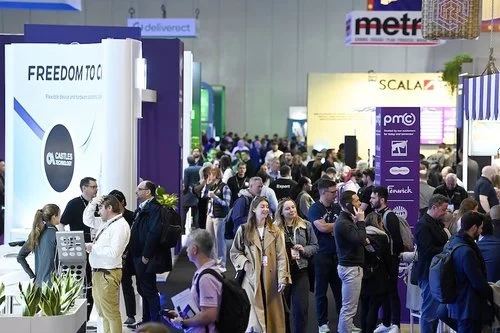Rob Barnes departs Asda and CIO role after driving technology change across the business
Rob Barnes has left grocery giant Asda where, for the past 15 months, he held the position of Chief Information Officer.
In a LinkedIn post, Barnes, who joined Asda from Marks and Spencer, said: “Thanks for your messages this week folks! As some of you have seen, I've taken the decision to leave Asda. It's been an incredible 15 months, where we've landed so much technology change as a business across our stores; online; supply chain: and home office.”
He added: “We've also made a fundamental shift in our tech and data operating model to align us all more closely to our customers and colleagues, but I've been offered a great new opportunity that I'm really looking forward to starting later this year. I look forward to sharing more details of my new role later in the year.”
Earlier this year, Asda was granted an extension to the timescale for an £80 million IT upgrade by its former owner Walmart, after it missed a crucial deadline target. This is required to fully separate Asda’s IT system from that of Walmart. Project Future, as it is known, had been set for completion by February.
RTS 2025
Omnichannel emerged ten years ago as a key retail term and aim. “But it was invented by us the industry, not the customer. Same with ‘seamless’” said Barnes at Retail Technology Show 2025 earlier this month in a data centric panel with representatives from Dunelm and Seasalt that also touched on AI.
“Just be brilliant at execution in channel,” added Barnes. “Customers are OK with it not being seamless.”
Whatever you call it, aligning your physical stores with your digital offerings, social media platforms, data capture and marketing, plus fulfilment and other retail efforts in a comprehensive manner, often via a loyalty programme, is a key ongoing trend in the sector. As long as the end result is a good customer experience (CX) the customer won’t care about the terminology. The business should get efficiency in the back-end and bottom line benefits too.
The other panellists at RTS 2025 comprised of Adam Cotgreave, Chief Transformation Officer at Seasalt Cornwall; Paul Kerrison, Director of Engineering, Quality & Architecture at Dunelm; and Nikki Baird, Vice President of Strategy and Product at Aptos Retail – all of them shared their latest projects and tips in this area with the moderator.
Unified commerce in action
Indeed, Kerrison shared a unified commerce example - a much better term in the panel’s opinion. “Our ‘made to measure’ tool can help customers configure their home design online and they can then go in-store to feel the materials and order it there, for shipping back to them,” he said. “That is unified commerce in action.”
Outside of his own firm, Kerrison also cited Costa Coffee as “someone that has nailed on and offline integration”, citing how he can order online and then go into store for a fast physical collection using his name.
Barnes was similarly impressed with Nike’s running tracks and basketball courts in its stores, which link to online and social media promotions of events in the shop and act as a try-out arena for its goods.
Cotgreave, meanwhile, liked Caffé Nero’s digital loyalty programme on his phone that offers surprise and delight rewards, “such as ‘have a croissant on us.”
Combining the front and back end effectively
Personalisation, context and location are key drivers in delivering a good unified service and CX. The back-end is important too, however, when seeking to align a retailer’s IT, operations and customer base effectively. “For our next projects, we are looking at in-store self-checkout [to cut down on queues –Ed.] and RFID to aid inventory procedures and efficiency, which also frees up our customer agent’s time,” said Kerrison.
According to Cotgreave, the Cornish headquartered B Corp clothier is also focusing on the back end at the moment, but again the reason is to remove any obstacles to a straight-through frictionless service for the front end customer. “We want to ensure retail is a great, real experience,” he said, while also admitting the efficiency and alignment effort in the back-end will additionally deliver business benefits. “Optimising stock is key during the present tough times, so you don’t have to mark down.”
“Finding ways to capture and feed information [data] back into the business is crucial,” he added, no matter if the end use is for the front or back end. For the former, however, contextualising data is very important to serve the customer well.
Personalisation and AI
“Personalisation via artificial intelligence (AI) tools that can mine the internal structured data and the external unstructured information available on social media platforms is a crucial trend in the retail industry, and was much discussed by the panellists at RTS 2025.
“This is very important for the future,” said Kerrison, before detailing his company’s nascent social media and commerce journey in participation with creators, influencers and the like on TikTok and similar platforms. “Love it or hate it, socials are a thing and you have to go where the customers are,” said Kerrison, while mentioning their work with Sophie Robinson, a colourist and interior design influencer.
“We are nervous to start on socials and have only recently addressed the area with some new KPIs (key performance indicators),” said Cotgreave, who feels his firm is getting better at it now. “It’s going to have to form part of our personalisation drive.”
You first have to get the data for any cross channel personalisation drive, which was the key thing last decade when retailers tried to form data lakes. Many have since become data swamps because the tagging during the capture phase wasn’t sufficient or the large datasets haven’t been utilised correctly in the back- or customer facing front-end of the business.
The hardest part is to actually use the data well. This is where AI can come in as it can interrogate data at scale and enable useful products, service procedures and campaigns. AI was one of the key themes at this year’s trade show and there were many vendors on the packed exhibition floor at RTS 2025 who were offering solutions and tools to the retailers in attendance.
Some real-world AI end uses at Kingfisher were also highted at the show.
RTIH AI in Retail Awards
RTIH, organiser of the industry leading RTIH Innovation Awards, proudly brings you the first edition of the RTIH AI in Retail Awards, which is now open for entries.
As we witness a digital transformation revolution across all channels, AI tools are reshaping the omnichannel game, from personalising customer experiences to optimising inventory, uncovering insights into consumer behaviour, and enhancing the human element of retailers' businesses.
With 2025 set to be the year when AI and especially gen AI shake off the ‘heavily hyped’ tag and become embedded in retail business processes, our newly launched awards celebrate global technology innovation in a fast moving omnichannel world and the resulting benefits for retailers, shoppers and employees.
Our 2025 winners will be those companies who not only recognise the potential of AI, but also make it usable in everyday work - resulting in more efficiency and innovation in all areas.
Winners will be announced at an evening event at The Barbican in Central London on Wednesday, 3rd September. This will kick off with a drinks reception in the stunning Conservatory, followed by a three course meal, and awards ceremony in the Garden Room.
Please email our Editor, Scott Thompson, if you have any questions or need further information: scott.thompson@retailtechinnovationhub.com
Key 2025 dates
Friday, 18th July: Award entry deadline
Tuesday, 22nd July: 2025 finalists revealed
Wednesday, 23rd July - Friday, 8th August: Judging days
Wednesday, 3rd September: Winners announced at the 2025 RTIH AI in Retail Awards Ceremony, to be held at The Barbican in Central London.































Continue reading…